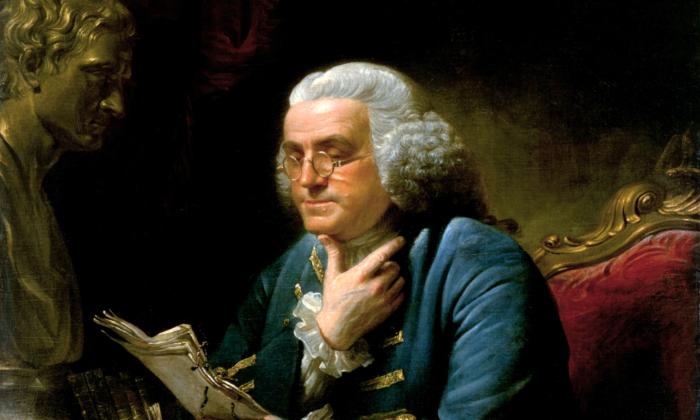In the early years of the American Revolution, after the British evacuated Boston and took control of New York, the area encompassing historical Westchester and Dutchess counties in lower New York Colony became a uniquely dangerous zone, particularly for residents. The little region wedged between Long Island Sound and the Hudson River, and farther to the north between Connecticut and the Hudson, was a frontier of sorts. To the south was British-controlled Manhattan Island, and to the northwest was the Continental Army’s stronghold in the Hudson Highlands. In between was “neutral” ground.
Henry Ludington
In the Philipse Patent of lower New York Colony, which became South Duchess County before becoming Putnam County, Henry Ludington and his growing family made their home. Ludington was a young veteran of the French & Indian War who moved to the Philipse Patent from New Haven in 1760. He had quit school at 17 to join the British army and fight in the war. For enduring harsh trials and for voluntarily re-enlisting several times, he was made a lieutenant. Before he was awarded the rank, however, he was made to take the Oaths of Fidelity and Abjuration, which pledged loyalty to King George III and disavowed any loyalty or connection to the Pope.Family members writing his memoir recall that as a lad, Henry was not suited for studies. “The school boy became a man of action halfway through his teens.” “He had a daring disposition and a strong appeal for adventure,” the memoir states. It also described him as having a “more than ordinary” force of character. One can infer, then, that Henry Ludington was well suited for leadership and authority. In coming to New York, Lt. Ludington settled near Frederickstown on a leased tract of land comprising over two hundred acres. The property was located on a busy road connecting Hartford and New Milford in upper Connecticut with Fishkill and West Point in the lower Hudson Valley.

Reversing His Allegiance
In 1763, when Sybil was 2 years old, Henry was appointed justice of the peace and deputy sheriff. He also had built a gristmill and sawmill on the property and was doing so well that years later he purchased the land from then-owners Samuel Gouverneur and his wife. Until 1765, Henry showed no indication that his allegiance to the king would ever falter. The initial fissure came when Parliament imposed the hated Stamp Act upon the Thirteen Colonies. Ludington resigned his officer’s commission in protest.Later, in 1773, he accepted a captain’s commission in a Loyalist Militia from New York’s Royal Governor William Tryon, but as relations between Britain and America worsened, he would not keep that rank long. By late 1775 or early 1776, he switched his allegiance definitively to the Patriot cause. By the time of the Battle of White Plains (October 1776), he was Colonel of the Dutchess County Militia in the Patriot army and served as an aide-de-camp to Gen. George Washington at that battle.
Following White Plains, British Commander William Howe announced a bounty of three hundred guineas for Col. Ludington’s capture, dead or alive. Therefore, by early spring 1777, yet another persistent threat loomed over the Ludington family—aside from the sacrifices of wartime and the lawlessness of the neutral ground. The added stressor was the encroachment of bounty hunters. Sybil looked out for her father’s welfare and safety. One night, she and Rebecca, her next oldest sibling, on some quick thinking managed to discourage a group of 50 men from attempting to capture or kill her father.

Daughter Sybil
By the nature of Henry’s growing family, he depended on his eldest daughter for help in many different ways. His wife, Abigail, was too busy with the younger children to be of much direct support to her husband. Meanwhile, Sybil had been born with the same lust for action that her father had, and she grew up with a passion for action. Henry had carefully taught her how to do many things, including riding a horse and firing a musket. He taught her the local countryside, the lay of the land, and pointed out where his militiamen lived.On the eve of April 26, 1777, an exhausted messenger arrived at the Ludington home from Danbury, Connecticut. A British contingency of 2,000 men commanded by former Governor William Tryon had come ashore at Compo Beach the day before, marched to Danbury, and started burning much of the town. Col. Ludington asked the messenger if he could summon his militiamen to muster, but the lad and his horse were already too spent. The Ludington memoir states that, given the emergency situation, he bid Sybil to take her horse and make the necessary trek to summon all of his militiamen to muster by daybreak at the Colonel’s house. She took off into the darkness, in the cold rain, and would travel some 40 miles in a circuitous route before arriving back home.
“There is no extravagance in comparing her ride with that of Paul Revere and its midnight message,” the memoir states. “Nor was her errand less efficient than his. By daybreak, thanks to her daring, nearly the whole regiment was mustered before her father’s house at Fredericksburg, and an hour or two later was on the march for vengeance on the raiders.”
While the men couldn’t defend Danbury, they did come upon the Redcoats at Ridgefield, Connecticut. Combined Patriot forces prevented the British from making farther advances inland, and the militia under Henry Ludington’s command harassed the enemy column as it began retreating toward the sea. It was the first and only time during the entire war that the British army attempted a landing and offensive action in Connecticut. The Hudson Highlands had been defended, and Sybil Ludington played a large part in their defense. It is said that George Washington paid Sybil a visit at her home afterward to thank her for her service.





